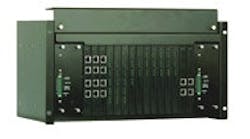Even those that appear to succeed often come up with little more than half-measure improvements or savings. Still, relentless economic forces continue to demand more performance at less cost, and in process control and automation this means combining capabilities and related software and hardware where possible and practical.
For instance, RTP Corp. says its new RTP 3000 critical control and safety system is an update of its RTP 2500 system. Buddy Creef, RTPs sales VP, says RTP 3000 can be used both as an SIS and for basic process control because it has a complete software suite like a DCS plus an advanced instruction set that gives it sophisticated analog capabilities. However, because RTP still mainly targets safety users, the firm stresses that RTP 3000 has the flexibility and reliability to achieve SIL 1 to SIL 3 safety using the same Simplex, dual-redundant and triple modular redundant (TMR) components.
We decided several years ago that RTP needed to get involved in the safety business, says Creef. So, we built an IEC 61508-compliant DCS, launched it in 2003, and secured TÜV approval in 2006. Since then, weve used customer input to refine RTP 2500 and create RTP 3000. All improvements in RTP 3000 are the result of customer input.
RTP 3000 maintains the main benefits of the RTP 2500, such as 99.9999% availability; more than 2,800 years mean time to fail safe (MTTFS), competitive pricing, site license of software, high diagnostic coverage, and 1 millisecond (msec) sequence of events (SOE) on digital and 2 msec SOE on analog. User-generated improvements in RTP 3000 include increased availability in a smaller footprint, and ease of use features, such as automatic diagnostic creation, expanded instruction set, increased performance, 1 msec SOE on all digital and analog points, and a 25% cost reduction.
Our customers were most interested in increased ease of use and improved availability says Creef. Its important that plants run uninterrupted unless a shutdown is necessary. When a shutdown is necessary, its important that the SIS provide as much information as possible about the cause of the shutdown and that the information it provides be easily understood. Most of the features weve added address one of both of these customer requirements.
Creef adds that RTP 3000 is easier to use thanks to several automatic capabilities. For example, RTP 3000 automatically creates diagnostic information and tags for its users. It also automatically relays this data to HMI screens, which means better information for users and less downtime.
Availability was increased by adding redundant chassis processors in one chassis. This pushed RTP 3000s MTTFS to more than 3,000 years, assuring that processes wont be interrupted by SIS faults. And, when a shutdown occurs, automatic diagnostics that made commissioning easier will also make diagnosing problems easier.
RTPs architecture gives the RTP 3000 node processors for logic solving and chassis processors for I/O scanning. Creef says this increased processing power enables increased diagnostics to insure RTP 3000s integrity. It also allows RTP 3000 to maintain a 5-msec scan regardless of I/O point numbers or the users program size. Besides maintaining its constant 5-msec scan time, RTP 3000 achieves a 12-msec reaction time from seeing an input to actuating a change. Creef says competing systems run at 300 msec to 500 msec.
We also have a unique software policy. Our NetSuite software suite, which includes configuration, HMI, alarming and data archiving, as well an OPC server and simulation functions, is sold as a site license, adds Creef. Users purchase one site license, and theyre able to use it on as many applications as they want. Support and upgrades are even included in the site license price.
For more information, contact RTP by phone at 954.974.5500, by e-mail at [email protected], or on the web at www.rtpcorp.com.




